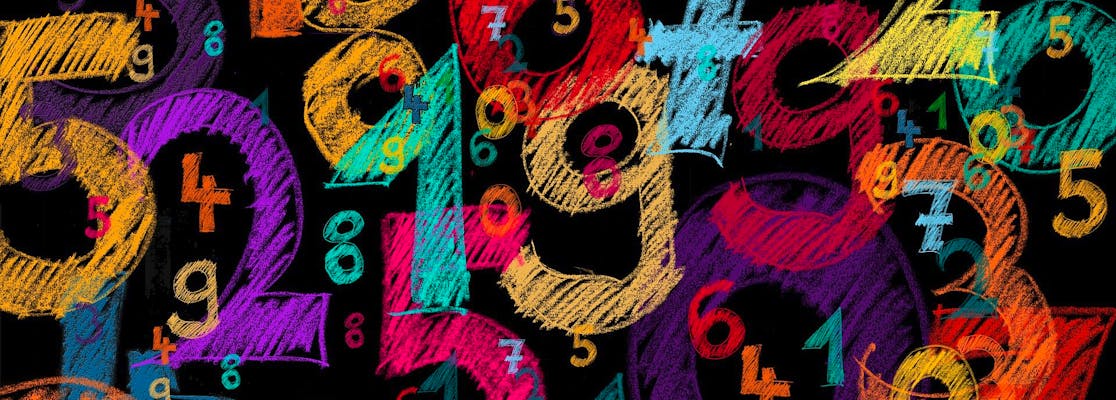How to Solve Percentage Questions
Updated November 18, 2023
- Understanding Percentages
- Decimals and Percentages
empty
empty
- Fractions and Percentages
empty
empty
- Calculating a Percentage Increase
empty
- Calculating a Percentage Decrease
empty
- Calculating the Percentage of a Particular Value From an Overall Value
- Calculating a Certain Percentage From a Known Value
- Working Backwards on Percentage Questions
- How to Recognize a Percentage Calculation Question
- Percentage Questions - Tips and Mistakes to Avoid
- Conclusion
Understanding Percentages
Before you can look at methods for solving percentage questions, it is important that you understand what a percentage is.
Percentages describe how much there is of something in relation to a whole and are useful in understanding relative amounts. We use percentages outside of mathematics in everyday life for calculating tax, working out discounts, and giving the correct amount of money for a tip at a restaurant.
Percentages are recognized by the % symbol. A whole is 100%. Percentages can be less than a whole, like 20%, or more than a whole, like 120%.
To find the percentage of a value, there is a simple equation to complete:
value ÷ 100 x percentage
For example, if you wanted to find 20% of $40, you would use the following equation:
$40 ÷ 100 x 20 = $8
Percentage questions are widely used in numerical reasoning tests and there are a few concepts to understand to be fluent in percentages.
Decimals and Percentages
Percentages and decimals are interchangeable and converting between them makes working out percentage problems easier.
How Do You Convert Decimals to Percentages?
If you have a decimal figure and you want to convert it to a percentage, simply multiply the decimal figure by 100.
For example:
Other examples are:
How Do You Convert Percentages to Decimals?
Converting a percentage into a decimal is the opposite function of the one above. Simply divide the percentage by 100 to find the decimal.
For example, if you wanted to convert 56% into a decimal, divide it by 100:
Some more examples are:
- 43% = 43 ÷ 100 = 0.43
- 78% = 78 ÷ 100 = 0.78
- 165% = 165 ÷ 100 = 1.65
Prepare for Any Job Assessment Test with JobTestPrep
Fractions and Percentages
Working with fractions and percentages can help you to understand the relationships between numbers.
How Do You Convert Fractions to Percentages?
When you are presented with a fraction that needs to be converted into a percentage, the first step is to make it into a decimal by dividing the top number by the bottom number. You can then multiply the result by 100 to find the percentage.
For example, if you need to convert 1/4 to a percentage, start by dividing 1 by 4.
The answer is 0.25. Multiply by 100 to get 25%.
Other fractions expressed as a percentage:
- 3/8 = 0.375; 0.375 x 100 = 37.5%
- 1/8 = 0.125; 0.125 x 100 = 12.5%
- 3/4 = 0.75; 0.75 x 100 = 75%
- 9/8 = 1.125; 1.125 x 100 = 112.5%
Prepare for Any Job Assessment Test with JobTestPrep
How Do You Convert Percentages to Fractions?
This is somewhat simpler than the opposite function. Simply divide the percentage by 100 and simplify.
For example, 11% as a fraction would be 11/100. This can’t be simplified any further.
Some more examples:
- 75% as a fraction would be 75/100. This can be simplified to 3/4 by dividing both the top and bottom numbers by 25.
- 50%: 50/100. This can be simplified by dividing the top and bottom numbers by 50 to get 1/2.
- 150%: 150/100. This can be simplified to 3/2 by dividing the top and bottom numbers by 50.
Calculating a Percentage Increase
In some assessment questions, you might be asked to work out the percentage increase between two figures to find out by how much the first figure has grown.
This can be calculated with the following equation:
increased amount ÷ original value x 100
For example, if you had an original value of 75 and a new value of 100, to calculate the percentage increase:
(25 is the increased amount)
The increase is 25%.
Other examples:
Calculate the percentage increase from 60 to 120:
Calculate the percentage increase from 126 to 378:
(to two decimal places)
Calculate the percentage increase from 100 to 1,000:
If you need to prepare for a number of different employment tests and want to outsmart the competition, choose a Premium Membership from JobTestPrep.
You will get access to three PrepPacks of your choice, from a database that covers all the major test providers and employers and tailored profession packs.
Prepare for Any Job Assessment Test with JobTestPrep
Calculating Percentage Increase With a Calculator
The methodology described above works both with and without a calculator.
Be careful when using the percentage button on a calculator, as it works in an extremely specific way. It converts the number entered beforehand to a decimal.
Calculating a Percentage Decrease
Calculating a percentage decrease is useful when you are looking at sales in shops or the applied discount on a receipt. There are two ways of doing this calculation.
To start with, convert the percentage to a decimal, and then multiply the starting figure by the decimal. Then you can take that result away from the original number to find the new amount.
This could be written as:
starting number − (starting number x (percentage as decimal))
For example, if you were buying a dress that has been reduced by 40% and the original price was $240, the calculation would be as follows:
40% as a decimal is 0.4
The other method of working out a percentage decrease is to subtract the percentage amount from the whole 100%, convert that to a decimal and then find the new number by multiplying the original number by the decimal.
This could be expressed as follows:
starting number x decimal value of (100 – percentage amount)
For example, if a different dress was originally $360 and had a 30% discount applied, how much would you pay?
(as a decimal: 0.7)
So the answer is: $252
Calculating Percentage Decrease with a Calculator
Using a calculator, the percentage button can reduce the time it takes to work out a percentage decrease, as long as you remember what you are trying to achieve in the calculation.
The button presses should be made in this order:
percentage amount followed by % button × original amount
For example:
40 + % button × 240
The percentage button turns the percentage amount into a decimal so that it can be calculated against the other amount. You can test this by pressing 40 and then the % button; the display will show 0.4.
Calculating the Percentage of a Particular Value From an Overall Value
This is a simple calculation that will help you find out what percentage one value is of another value.
These types of questions are often found in numerical reasoning tests and the calculations are usually taken from information given in a graph or chart.
The expression for this calculation would look like this:
particular value ÷ overall value x 100
If you wanted to know what percentage of eight cookies would remain if two were taken, the calculation would be:
Below are further examples of this scenario, based on a table that may be representative of the format of questions in your numerical reasoning test.
| London to Brighton | London to Birmingham | London to Edinburgh | |
|---|---|---|---|
| 07:30 – 09:00 | 850 | 1,100 | 620 |
| 09:01 – 10:30 | 800 | 2,350 | 1,400 |
| 10:31 – 12:00 | 750 | 1,870 | 980 |
| 12:01 – 13:30 | 600 | 1,500 | 790 |
- What percentage of travelers left London between 7 a.m. and 9 a.m.?
- What percentage of people traveling in the afternoon went south from London?
Calculating a Certain Percentage From a Known Value
To find the percentage of a number in relation to another number, the sum would be as follows:
number ÷ overall value x 100
If you wanted to know what percentage 5 is of 10, the sum would be:
What percentage is 6 of 8?
What percentage of 24 is 18?
Prepare for Any Job Assessment Test with JobTestPrep
Working Backwards on Percentage Questions
Working backwards on a percentage question can help if you are presented with a value greater than 100% and you need to work out the starting value. Remember that a percentage increase needs to be expressed as more than 100%.
The calculation would look like this:
given value ÷ percentage change x 100
For example, if you had a property that in the last five years had grown in value to $150,000 with a 20% increase, then to work out its value five years ago, you would need to do the following calculation:
Remember that the percentage increase is represented as 120% in this scenario.
The original price of the property was $125,000.
If you wanted to know what the original value of an item was if its final value is 360, and there had been a 40% increase, then the sum would be:
As these types of questions are likely to be presented as word problems, it is important to make sure that you recognize the way they are written to be able to answer them correctly.
How to Recognize a Percentage Calculation Question
Part of the difficulty of a numerical reasoning assessment is to decide what calculations are needed to make sure you find the right answer.
If the question openly asks for a percentage answer, this makes it simpler, but that might not always be the case.
The wording of such questions might include the phrases ‘relative difference’ and ‘relative change’.
It is worth noting that these phrases might also be used when fractions need to be found.
The best way to decide if you are meant to be looking for a percentage answer or a fraction answer is to look at the multiple-choice options before starting.
Percentage Questions - Tips and Mistakes to Avoid
Step 1. Watch Out for the % Button
Although using a calculator is allowed in some numerical reasoning tests, make sure you fully understand how the percentage button works. Remember that this button converts the number entered into a decimal.
If you are looking for the percentage of a value, then the sum will use the percentage amount (percent button) × value.
Step 2. Be Careful With Decimal Points
It can be confusing when decimal points are involved, and some answers will look to trip you up if you have not put decimal points in the right place in your calculations.
Be sure that you have put the decimal point in the right place, especially when dividing or multiplying by 100.
Step 3. Don’t Compare Apples to Oranges
When you are comparing sets of numbers, make sure that they have the same denominator or are related to each other.
Step 4. Calculate Year-on-Year Increases Carefully
A common numerical reasoning question asks you to work out how much a final amount would be with a year-on-year increase. This might look something like this:
If the starting salary of a police officer is $25,000 and there is a year-on-year increase of 3% in the position, how much would the salary be in five years?
The immediate response might be to multiply the 3% by 5 to make the calculation appear easier (25,000 + 15%) but this is not actually correct.
The increase does not happen all at once, it happens once a year. Each year the salary increases and the next year starts with that figure before increasing, so in this case, five separate calculations need to be made based on the result of the last one.
Step 5. Percentage Questions Aren’t Always Standalone Questions
In numerical reasoning tests, it is unlikely that the questions will be presented as a sum – data will be presented in graphs, tables and charts, or as word problems.
When you are practicing your percentage skills, use different ways of extracting information.
You can find practice percentage questions at JobTestPrep that are based on the structure of common numerical reasoning tests.
Step 6. Eliminate Unnecessary Information
When presented with a word problem, remember that information may be included that is not relevant to the question. Some problems might provide numbers or data that is irrelevant, so make sure you disregard this information to minimize confusion.
Step 7. Do You Need More Information or Data?
There is likely to be more than one calculation needed to arrive at an answer, and it could be that you need to find more information. Take in all the available information and do not assume any data is unnecessary until you are sure of what calculations you need to complete.
Step 8. Convert All Data Into the Appropriate Units
When looking at different sources of information, you need to make sure that everything is in the right denomination. This is especially true when looking at things like mass, velocity or time.
Step 9. Rearrange Difficult Problems to Make Them Easier to Calculate
When time is of the essence, rearranging problems to make them simpler can help you make the most out of the time available.
This process of simplification is something that can be practiced. Remember that it is not the level of mathematical ability that is being tested but the methodology. This means that even in assessments that allow calculators, the problems are not likely to be difficult.
Conclusion
Calculating percentages is a mathematical function that is frequently used in everyday life – and in numerical reasoning tests. Having reliable methods to use percentages makes it much simpler to find the answer you need in an assessment.
Although using a calculator can seem like the perfect way to get through an assessment, the percentage button can cause errors if you don’t quite understand the way it works.
The hardest part about manipulating percentages is working out what the question is actually asking, especially when it is in the form of a word problem. Use all the evidence and information – including the multiple-choice answers – to decide what calculations you need to make.



